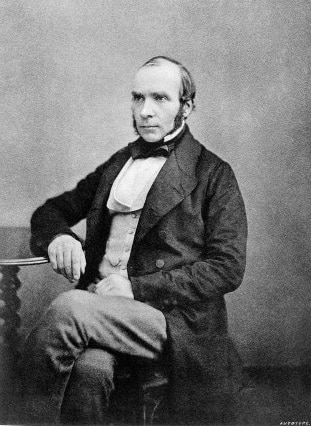
John Snow, who was a practicing obstetrician in London during the Victorian era speculated that cholera, (originated from a contaminated water supply pump on Broad Street. Mayo Clinic (2017) has reported that “cholera is a bacterial disease usually spread through contaminated water.
Cholera causes severe diarrhea and dehydration. Left untreated, cholera can be fatal in a matter of hours, even in previously healthy people.” In the year of 1854, John Snow did not stop the cholera epidemic in the city of London by removing the lever from the pump on Broad Street.
Similar to Snow’s counterparts who were in the medical field According to Paneth (2004), “Snow suspected that the agent of cholera was a tiny agent—too small to be seen with the naked eye, capable of reproduction, and probably constructed like a cell.”
The difference between Snow and other prominent doctors that were studying epidemiology was that Snow primarily focused on how cholera was transmitted from one individual to another throughout the general population of England.
Paneth agrees with Snow’s logic that having knowledge about a particular infectious disease does little to solve a communicable disease outbreak, but some scientists may argue that the phenomenology which is “an approach to qualitative research that focuses on the commonality of a lived experience within a particular group,” (Creswell, 2013) is seen as an effective way to combat an epidemic outbreak than to conduct research on the biologically functions of an agent.

Therefore, among other scientists, there is a misunderstanding about Snow’s knowledge and logic about the way cholera was transmitted among London’s population.
John Snow understood the physiological, and chemical components of how the disease can affect the human body, but he chose to study the source of where the disease was emerging in London.
Other prominent figures during his time found Snow’s reasoning to study where the first chorea outbreak occurred in London inaccurate because Paneth (2004) “explains that Snow [was] being too narrow in his thinking.”
Other prominent figures thought he was narrowed minded in his logic because in epidemiology scientist assess multiple factors to determine why a group or individuals have an increased risk of acquiring a communicable, or non-communicable disease, but according to Paneth (2004).
“Snow argued that the only dirty water that caused cholera was water contaminated by the evacuations of cholera patients, no matter how clean it appeared.” Paneth (2004) Snow also believed that cholera was more common among the poor populations because people of a lower class did not have access to soap and water like the rich populations of London.
Snow theorized that the working conditions among the poor contributed to the cholera epidemic such as “in mines [which] forced men to defecate and eat in the same place were all phenomena that increased opportunities for exposure to the fecal-borne agent of disease” (Paneth 2004).
While Snow believed that there was a correlation between poverty and cholera, his counterparts, such as the city sanitarians did not consider the connection between poverty and the cholera disease rates. Commonly, people who were of high social status during the Victorian Era, such as city officials, it was believed that heavy alcohol consumption was connected to high disease rates.
Though Snow did not take down the pump on Broad street, his studies contributed to modern epidemiology by perfecting surgical anesthesia and researching how to prevent the spread of cholera in the city of London. Snow was able to make medical contributions to society because he applied what he learned on a macroscopic and microscopic scale in society.
Since Snow heavily researched the effects of anesthesia, “He was an expert on the properties of inhaled gases which made him [doubtful] of the miasmatic cholera theories of this (Paneth 2004).
In 1854, John Snow testified against parliament about his research results that he found on anesthesia. Snow recorded medical and social history of each patient that he saw such as their age, sex, body type, social economical class, in order to figure why some patients suffered complications from the anesthetic. Though Snow found safe and effective surgical procedures with anesthetic, Snow faced hardships while conducting his research on cholera.
Some of the obstacles that he faced while researching the disease was the malfunction of the Broad Street water pump. While Snow was facing some difficulties in researching the communicable disease, he was able to analyze and compare the mortality rates from the boroughs of London from two water reservoirs that were connected to two neighboring boroughs.
Snow found the connection between the sanitarians that collected water from the Thames River, and from the middle of the city. The water that came from the Thames river was leached by raw sewage from another reservoir that was located near the heavily populated area of London.
How Is John Snow’s Qualitative Research Methods Relevant in Modern Epidemiology?
Similar to John Snow, some epidemiologists study the Etiology, or the origin of where communicable disease has first occurred “[which can be]…. can be medical or environmental (“101 Epidemiology”). As human activity such as carbon emissions and greenhouse gases are increasing the temperature of earth’s surface, “arid or temperate areas that become wetter may see the arrival or return of disease-carrying mosquitoes, (“101 Epidemiology”).
Since climate change is increasing the temperature of the atmosphere, geographical locations such as the southern United States, and southern Europe which are located in temperate areas of the world have seen an increased of mosquitoes causing diseases such as encephalitis and the Zika virus. According to the New York Times (2019) “
As of September 23rd, 2019 the New Jersey Department of Health said that the pair of cases of the Eastern equine encephalitis was detected in Union and Atlantic counties.”

Other modern-day epidemiologists say that there is a direct correlation between globalization and the transmission of a disease. (“Epidemiology 101”) reports that “with [a] greater movement of people, the challenge is one of quantity of infected or potentially infected, and exotic diseases spreading out of their natural habitats.
Where movement used to be a natural barrier to the spread of disease, it will not become its greatest ally” Similar to Snow, modern epidemiologists are gathering qualitative data on why certain mosquito borne illnesses such as the Zika virus are becoming increasingly widespread across the world among infants and adults since airway travel was invented in the early 20th century.
According to the American Mosquito Control Association “the Zika virus can be spread[not only by a mosquito bite but the disease can be transmitted] through sexual contact which includes vaginal, oral, and anal sex. Women who are pregnant or are planning to become pregnant are at an increased risk of transmitting the virus to the fetus through the umbilical cord after having sex with an individual that has traveled in high risk areas within three months.
Currently, research data is limited on how frequently; and how much viral DNA sheds in people who are symptomatic and asymptomatic through bodily fluids such as menstrual blood, vaginal secretions, semen, urine, and breast milk. If a fetus contracts the Zika virus it can result in a miscarriage, stillbirth, or microcephaly that can affect the development of an infant once it has been born.
Conclusion
John Snow contributed to modern epidemiology by using qualitative research methods instead of quantitative research methods like his counterparts who were in the medical field. John Snow applied the qualitative research method by analyzing how people’s individual experiences such as their social class, and their occupations may have increased their risk of acquiring cholera.
Today in epidemiological studies, research analysts are using qualitative research methods to understand how individuals who have sexual partners are acquiring the zika virus without traveling to high risk areas. Epidemiologists have linked the transmission of the Zika virus to sexual activity which includes having oral, anal, and vaginal sex before the three-month waiting period.
To prevent the transmission of the Zika virus to other individuals to people that are pregnant or planning to be, couples should use condoms and dental dams if they choose not to abstain from sexual activity.
References
Borne Diseases. (n.d.). Retrieved from https://www.mosquito.org/page/diseases.
Cholera. (2017, March 9). Retrieved from https://www.mayoclinic.org/diseases-conditions/cholera/symptoms-causes/syc-20355287.
Clinical Guidance for Healthcare Providers for Prevention of Sexual Transmission of Zika Virus. (2019, January 28). Retrieved from https://www.cdc.gov/zika/hc-
providers/clinical-guidance/sexualtransmission.html.
Epidemiology 101. (n.d.). Retrieved from https://www.environmentalscience.org/epidemiology.
Tuthill, K. (2003, November). John Snow and The Pump On Broad Street . Retrieved from
https://www.ph.ucla.edu/epi/snow/snowcricketarticle.html.
Qualitative Research in Corporate Communication Chambers, T., (2013, July 11). Retrieved
from https://blogs.baruch.cuny.edu/com9640epstein/?p=543.
Salo, J. (2019, September 23). Deadly mosquito-borne virus spreads to NJ with two more
confirmed cases. Retrieved from https://nypost.com/2019/09/23/mosquito-borne-virus-spreads-to-new-jersey-with-two-more-confirmed-cases/.
Zika virus and pregnancy. (n.d.). Retrieved from https://www.marchofdimes.org/complications/zika-virus-and-pregnancy.aspx.
